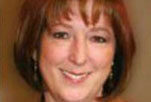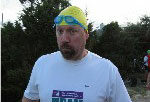My name is Christa and I have been a cardiac nurse at South Shore Hospital in S. Weymouth, MA for the past 15 years. My story is not from any of my many years of working in the medical profession but rather of the challenges I came across from the other side of nursing, as the patient. I have been a patient before, conquering bone cancer, rheumatoid arthritis and lupus and the many aches and pains that come along with these diagnoses and treatments and I consider myself a fighter.
I was being passed from doctor to doctor and being put on many different medications and treatment plans, even chemotherapy, and still I felt no better. It was two years ago that I had the scare of my life. I became the patient again. I was on the other side of the hospital bed now. I could not breath and the pain in my chest was unbearable. I was diagnosed with multiple pulmonary emboli and blood clots in my legs. I was told that I was lucky to be alive. What else could possibly happen to me? It was then that I was taken seriously about my complaints. It was then I tried so hard to understand why this was happening to me and I feared the unknown. My medical background was crushing in on me because I knew all the “possible” things that can happen from blood clotting disorders and lowered immune systems.
I felt helpless and out of control. My life was taken over by frequent blood work, doctors visits and blood thinners. Never mind all the side effects. I was determined not to let all this control me or my lifestyle. The hardest part was to learn to step back and take care of myself first. That is not as easy as it sounds. I was always the care taker, the nurse to my patients and my family. I was always the nurse telling my patients how to make important healthy lifestyle changes. Now it was the other way around. I had to get back on my feet and stop trying to understand why this happened to me, but instead I had to learn ways to accept the new challenges of living with a clotting disorder.
I cut back on my work load at the the hospital. I came off the night shift and changed many of the activities in my life. My diet had to change in order to get the maximum effect of my Coumadin®. Sometimes daily activities, meals, travel and health all depended on how high and low my INR results were.
Daily wardrobe depended on how badly I was bruised from lab draws and effects of the blood thinners. I frequently had to wear sunglasses to cover up the broken blood vessels in my eyes. I looked like a battered person. I can only imagine what my patients thought. But that is the life of a person on Coumadin®.
I certainly knew the Coumadin® was working. The hardest hurdle to overcome was the dreaded lab work. Difficult veins to draw blood, frequent long waits in the clinic and endless days waiting for the INR results to finally get back to me. It could be two days before test results came back and my Coumadin® was adjusted . Again, I felt out of control. I did some research on the computer and looked into home INR monitoring systems. I purchased a Protime Microcoagulation System with the help of my medical insurance company and doctor. I can now check my own INR at home with a simple finger stick and instantly have results. No more waiting or multiple attempts to find a vein at the clinic. I call the results in to the nurse representative for the home monitoring system and she in turn notifies my doctor.
My Coumadin® is adjusted instantly. I find that the values of finger sticks are accurate and dependable. I would highly recommend home INR testing to anyone on Coumadin® or blood thinners. I finally got the control back in my life again. Today I look back at all I have learned and see a whole new outlook on the medical profession and my nursing career. It was an eye opening experience being the patient instead of the nurse. Recovery from the hospital goes far beyond the hospital stay and follow up with your physician. When I get a patient newly diagnosed with a blood clotting disorder and started on blood thinners I can sympathize with their needs, concerns and fears. I can offer guidance not only as a nurse in the medical profession
but also on a more personal level.
There is still so much to learn about thrombosis and all the complications associated with it. I truly believe it is all in how you accept the diagnosis and move beyond it with a positive outlook. It is up to the medical professionals to educate the patient about clotting disorders and treatments for it. But sometimes it is up to those individuals who have the disorder to increase awareness to others so you do not feel like you are struggling alone with the challenges of clotting disorders. We can survive this and take control of our lives at the same time. I did.
Posted October 16, 2008




